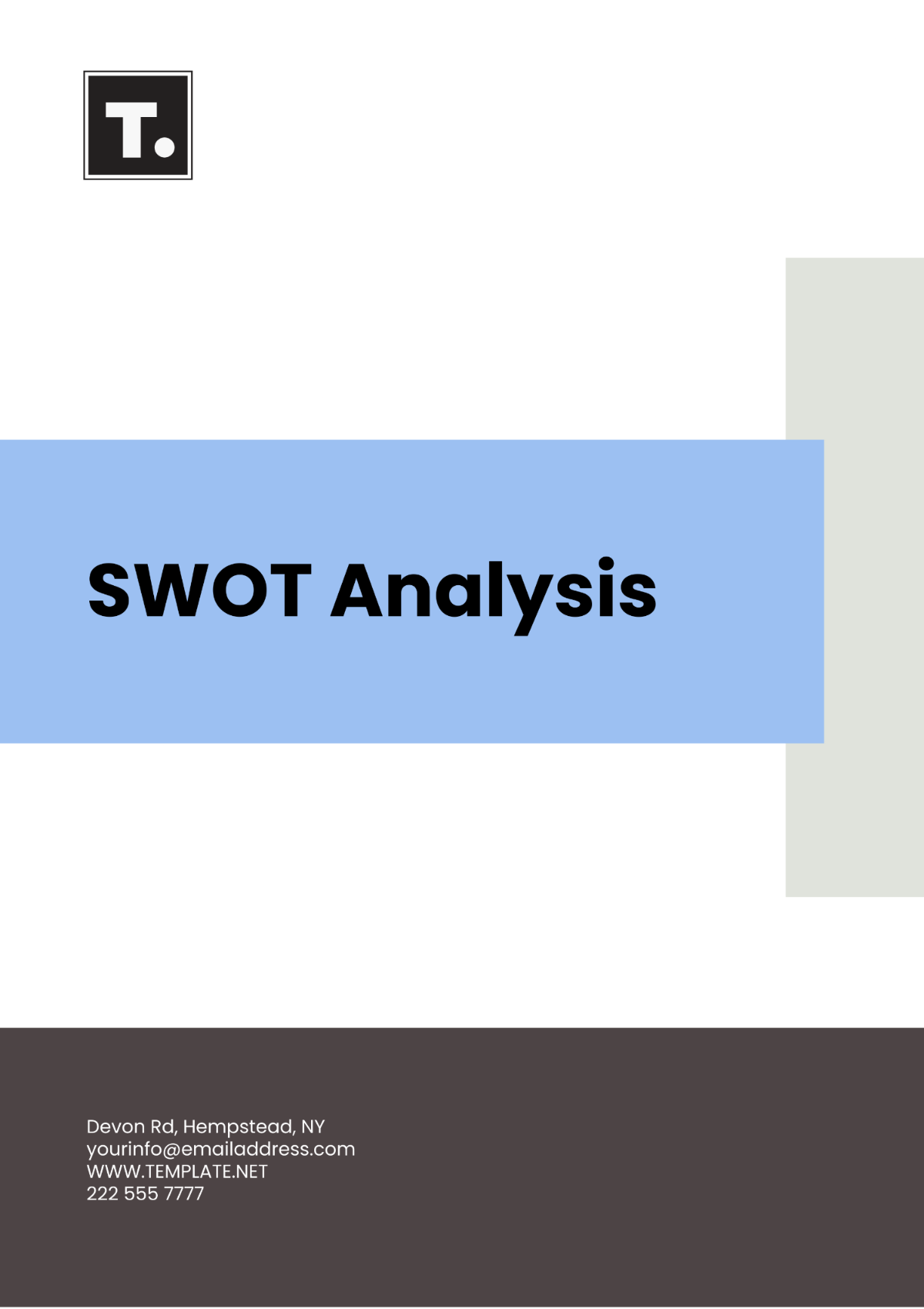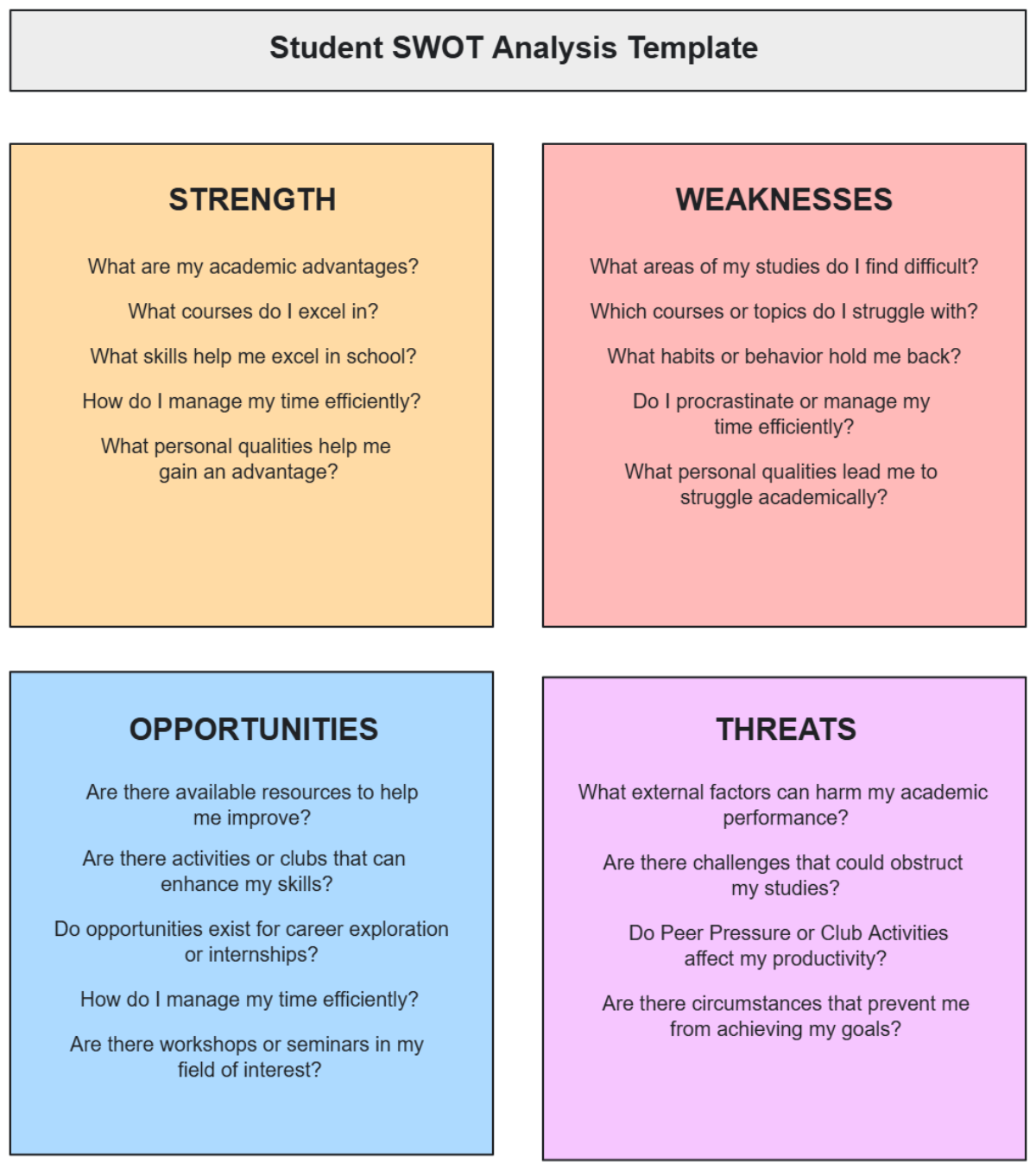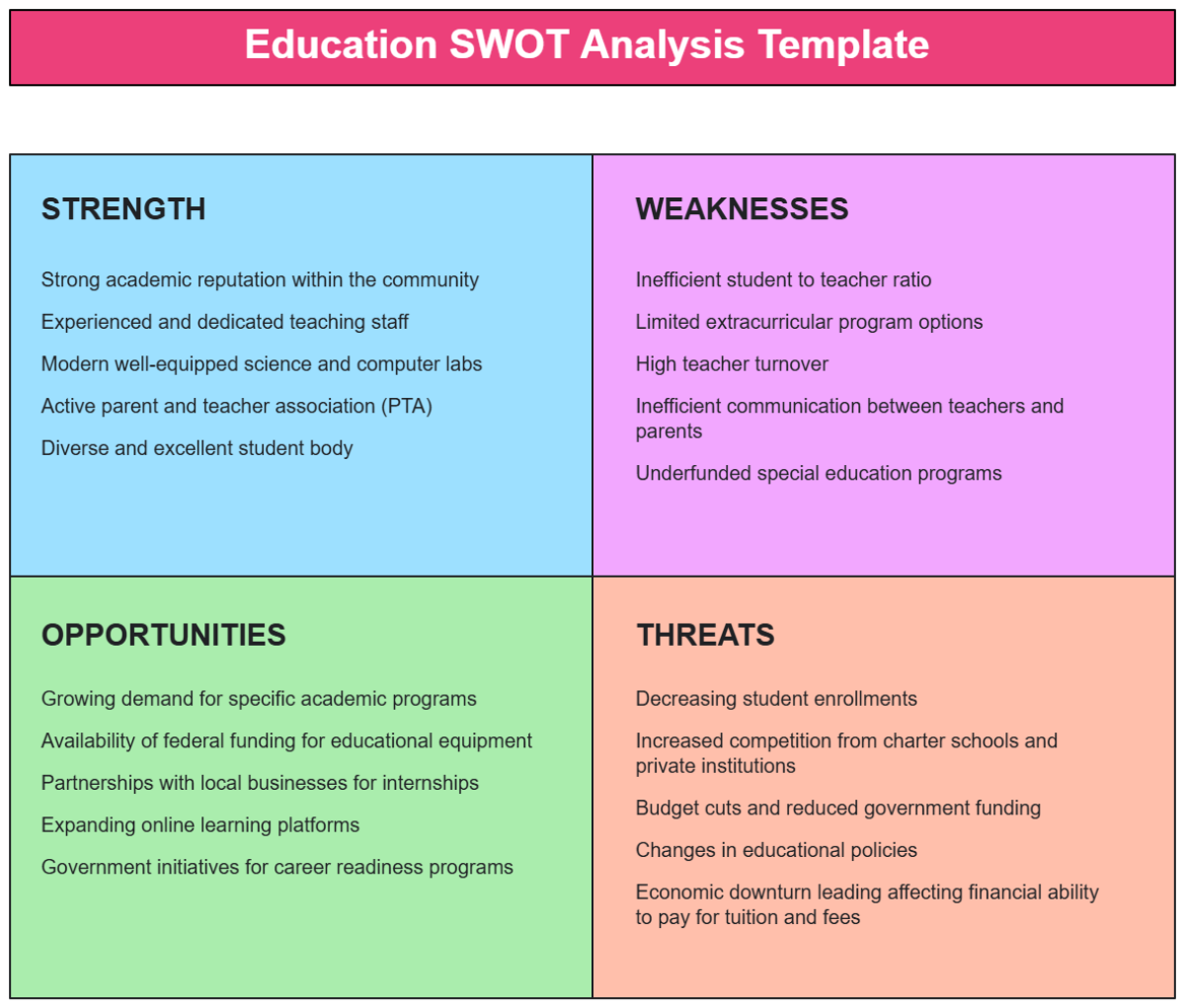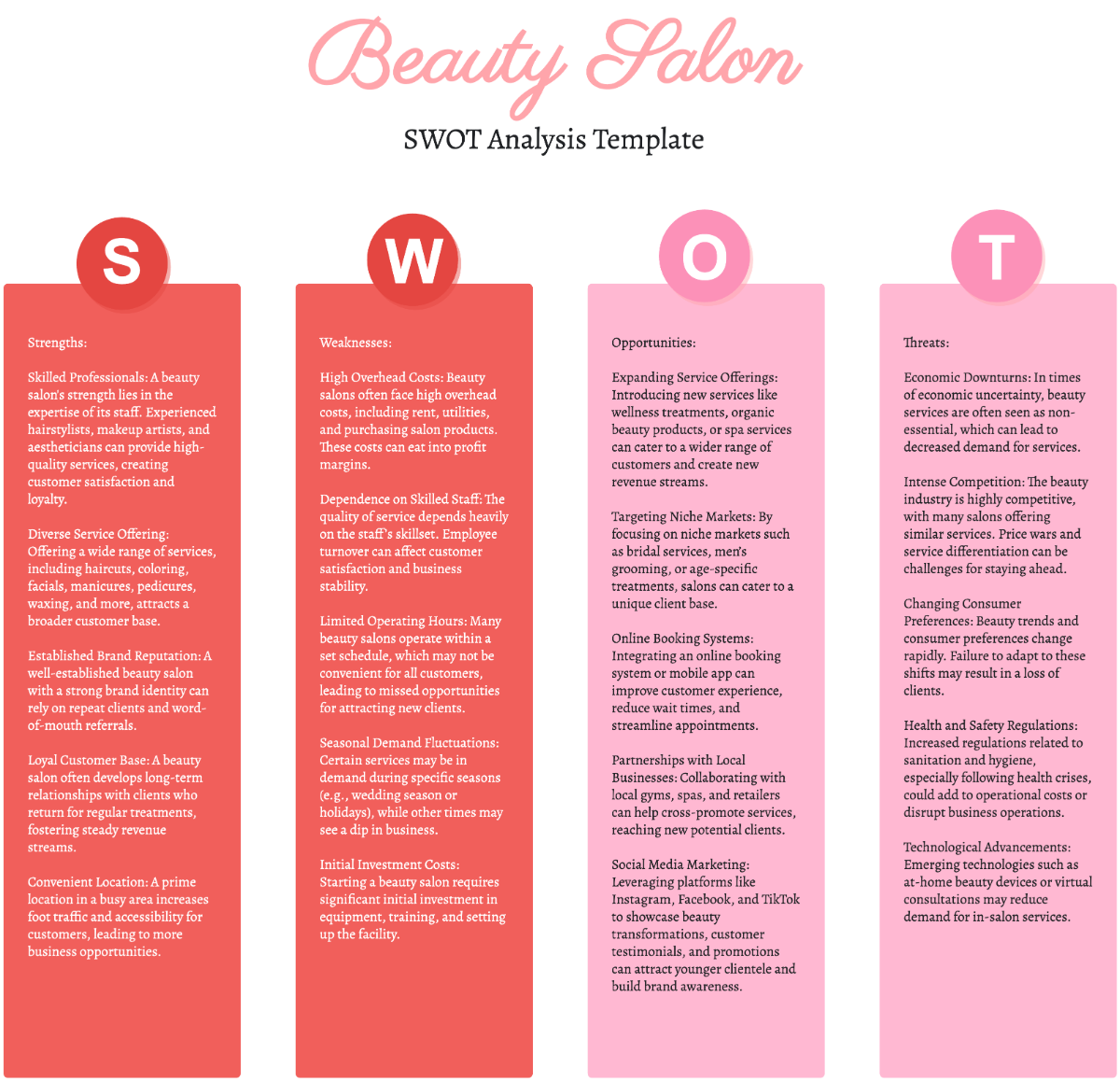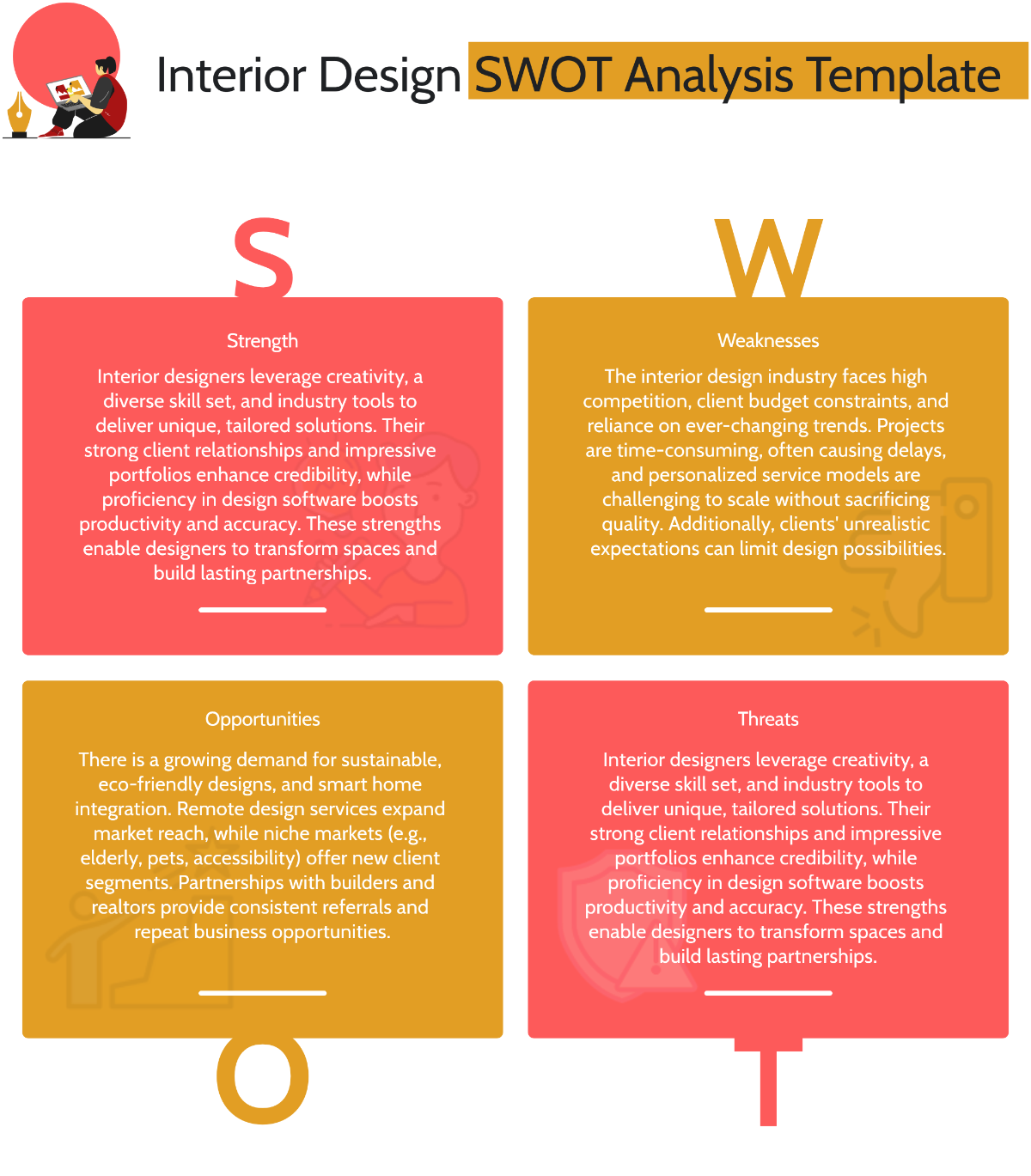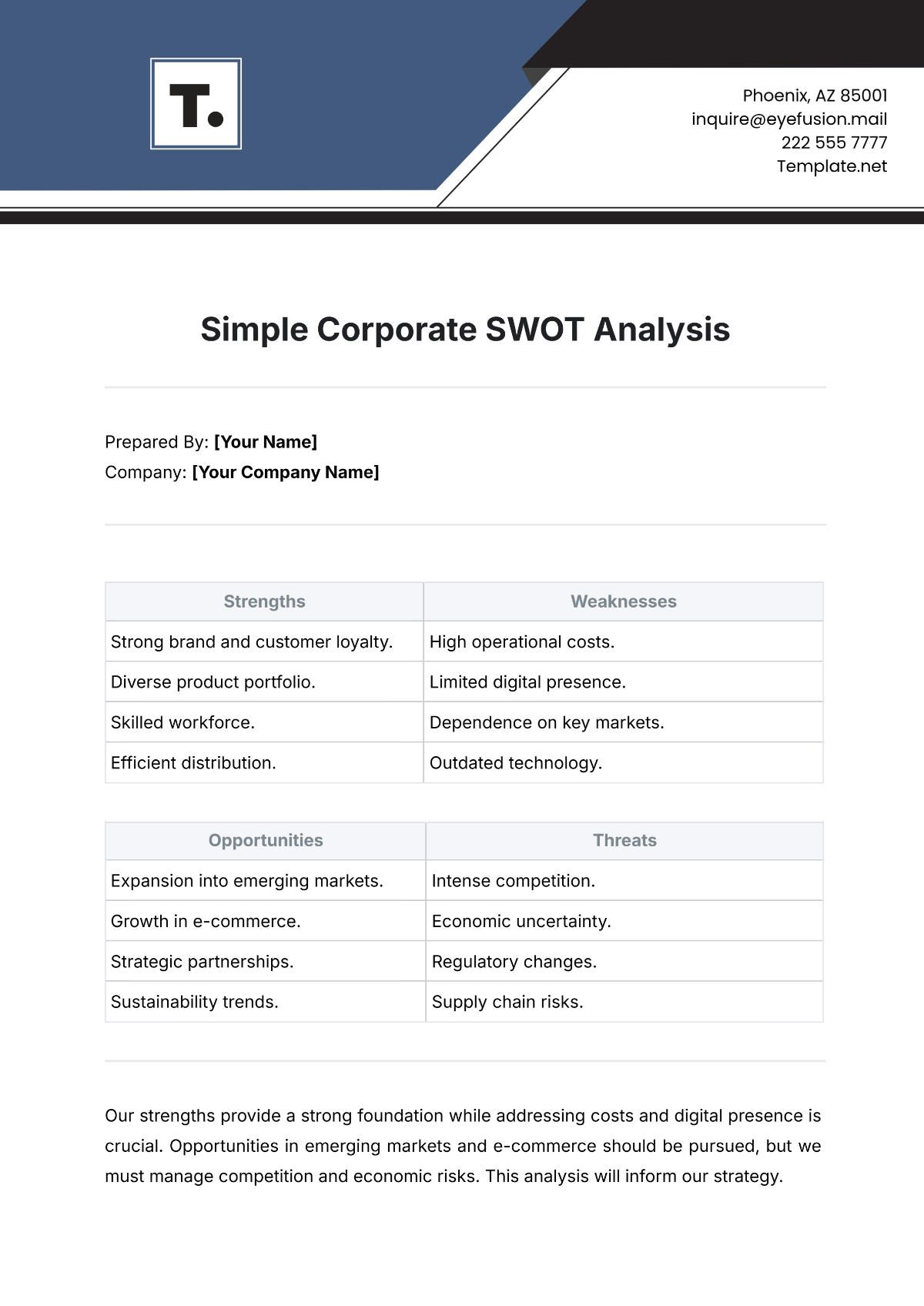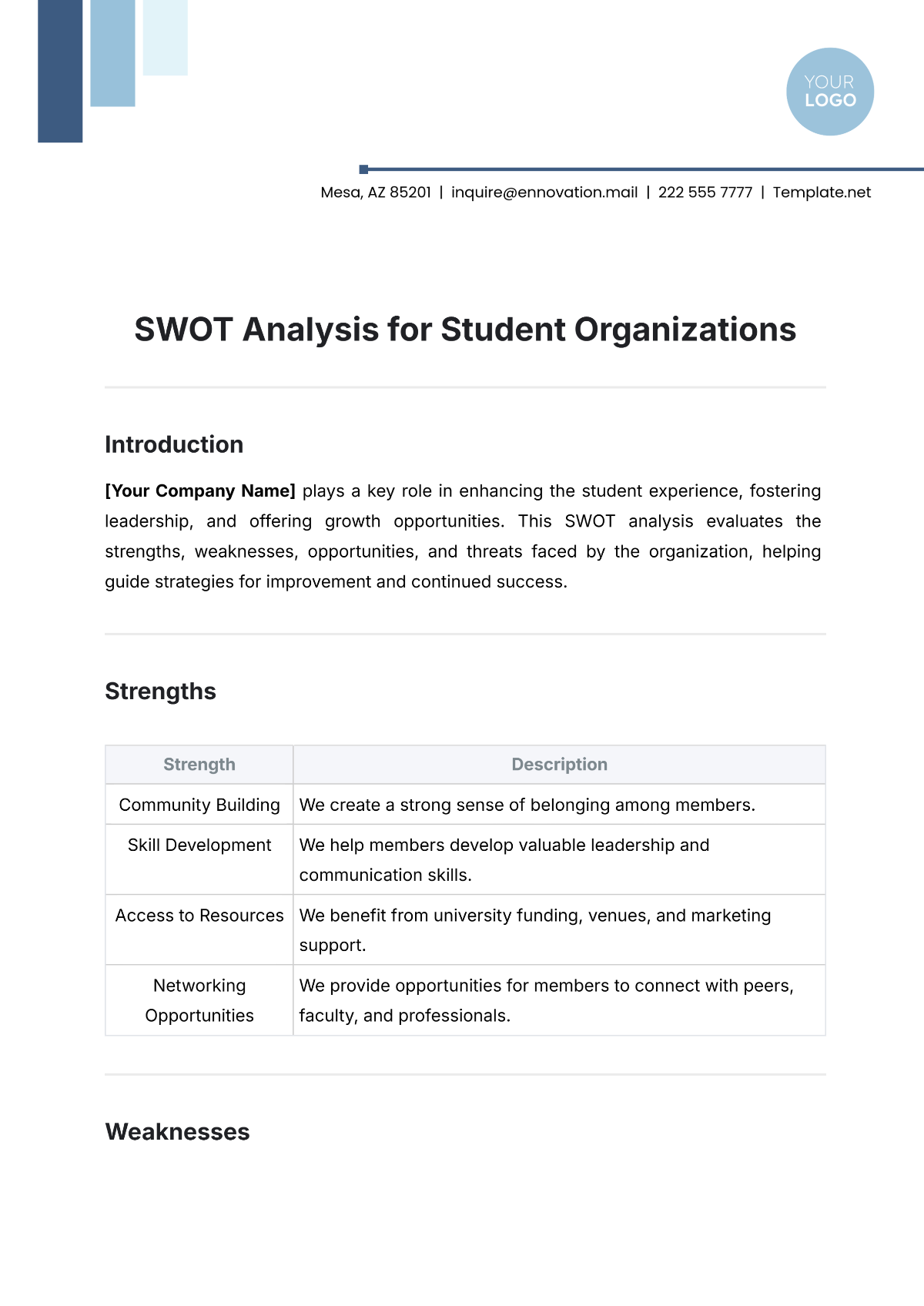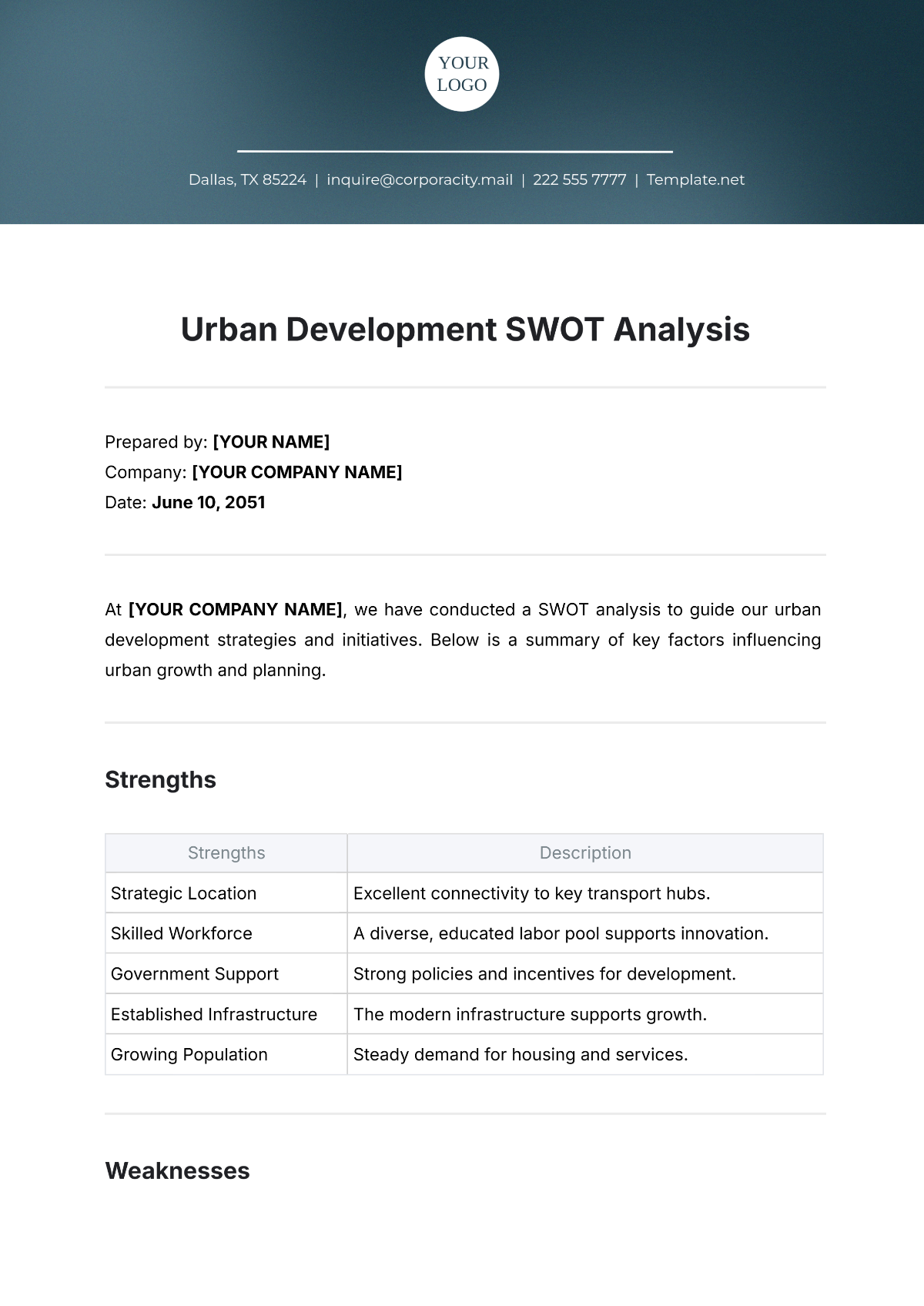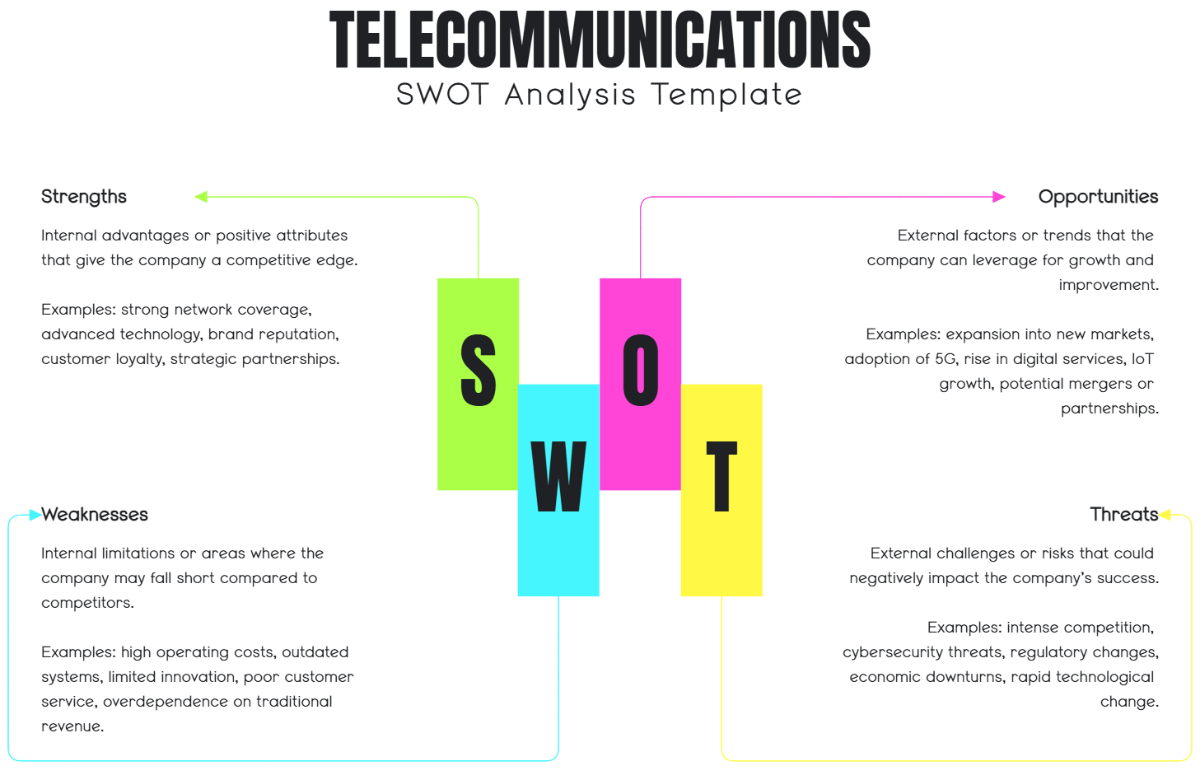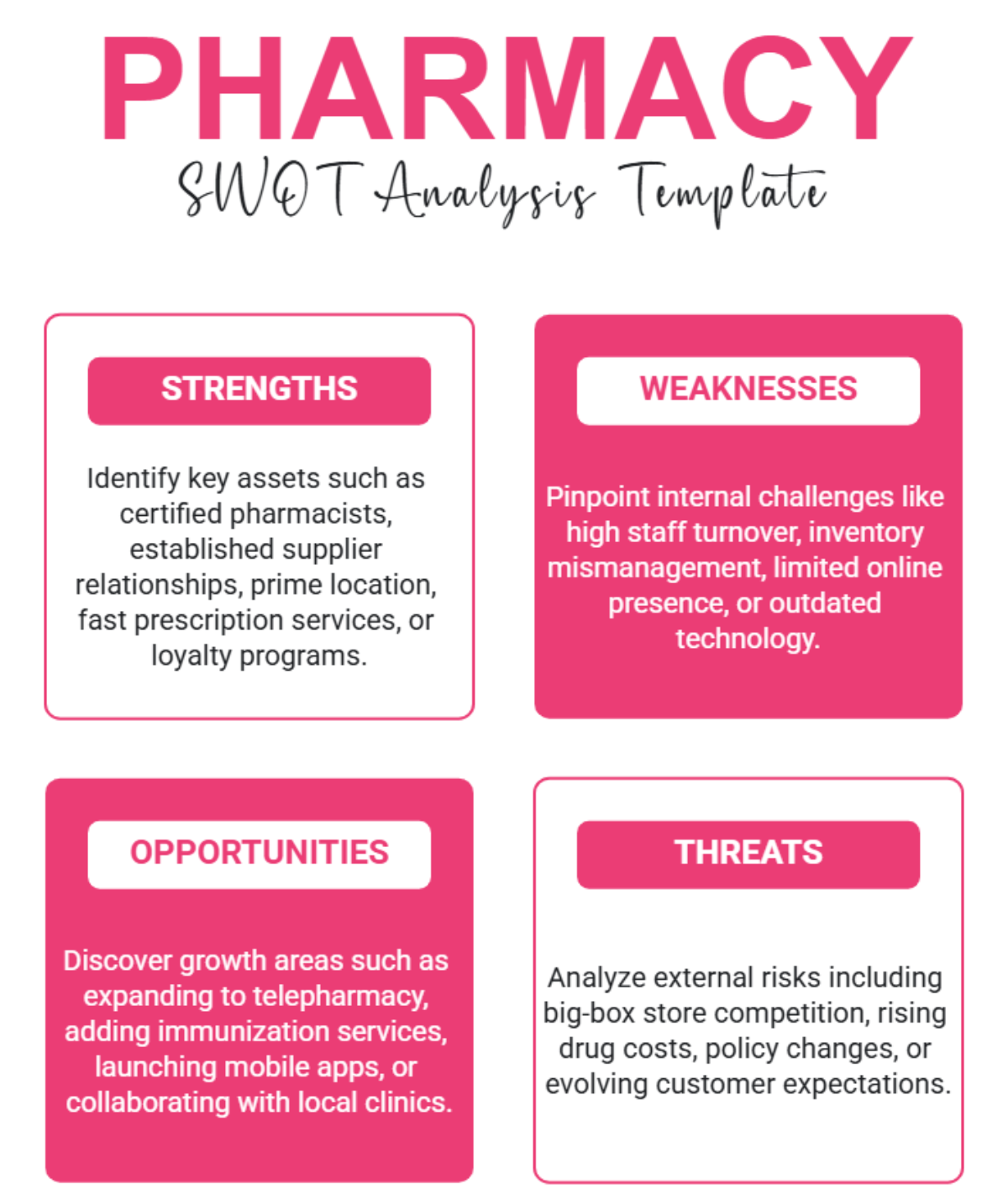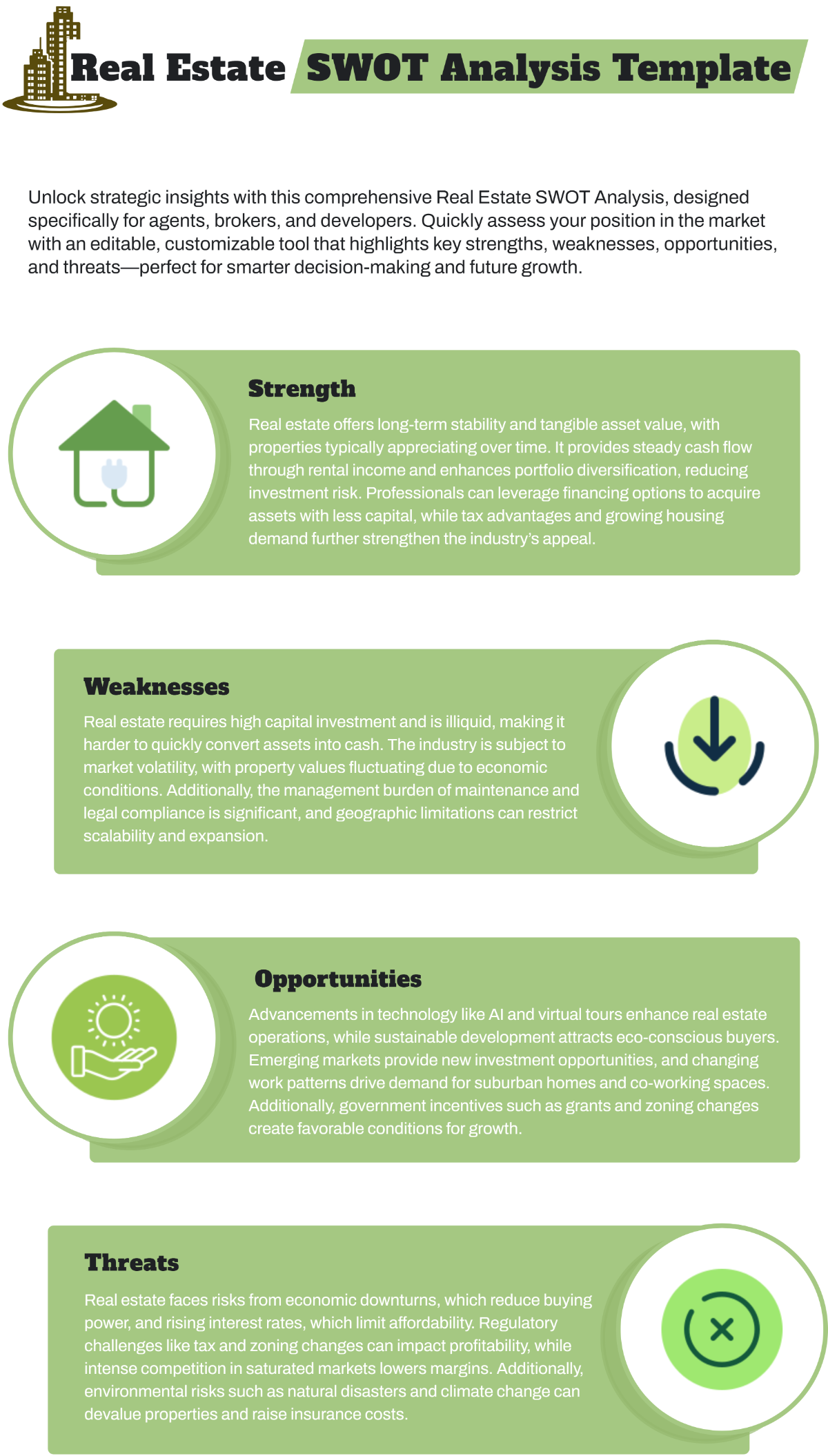Free Project Management SWOT Analysis Template
Project Management SWOT Analysis
Prepared By: | [Your Name] |
Company: | [Your Company Name] |
Department: | [Your Department] |
I. Executive Summary
This comprehensive SWOT Analysis delves into the intricate details of project planning to empower the [Your Company Name] with insights into critical success factors and potential challenges. By leveraging this analysis, the team can steer the project towards optimized outcomes.
II. Project
In this section, we present a holistic view of the project specifics, underscore the strategic significance of the SWOT analysis, and elucidate its integration within the broader project management framework.
Field | Information |
|---|---|
Project Name | [Project Name] |
Project Manager | [Project Manager's Name] |
Analysis Date | [Date] |
III. SWOT Analysis
A. Strengths
Delve into the internal attributes and resources pivotal for the project's success, exemplified by:
Aspect | Description |
|---|---|
Highly Skilled Project Team | Comprising seasoned professionals adept at navigating complexities. |
Cutting-edge Technological Infrastructure | Leveraging state-of-the-art tools and platforms to streamline operations. |
Robust Corporate Backing | Bolstered by unwavering sponsorship and visionary leadership, ensuring alignment with organizational objectives. |
B. Weaknesses
Explore internal vulnerabilities that might impede progress, including:
Challenge | Description |
|---|---|
Budget Constraints | Operating within limited financial parameters, potentially impacting resource allocation. |
Staffing Shortages | Insufficient personnel to meet project demands, possibly leading to burnout and compromised efficiency. |
Time Limitations | Constrained timelines pose challenges in meeting milestones and deliverables. |
C. Opportunities
Highlight external prospects that could propel the project forward, such as:
Topic | Description |
|---|---|
Emerging Market Dynamics | Capitalizing on evolving consumer trends and market demands to gain a competitive edge. |
Technological Innovations | Harnessing advancements to enhance processes, efficiency, and product/service offerings. |
Collaborative Ventures | Exploring strategic partnerships to expand reach, access new markets, and leverage complementary expertise. |
D. Threats
Identify external factors that pose risks to project success, including:
Challenges | Strategies |
|---|---|
Regulatory Changes | Adapting to evolving regulatory landscapes, ensuring compliance, and minimizing legal ramifications. |
Economic Volatility | Navigating fluctuations in the economic climate, safeguarding against financial instability and resource scarcity. |
Intensifying Competition | Mitigating threats posed by aggressive market rivals, preserving market share and brand relevance. |
IV. Strategic Action Plan
Drawing insights from the SWOT analysis, devise a proactive roadmap encompassing strategies to capitalize on strengths and opportunities while mitigating weaknesses and threats. Recommendations may include:
Resource Reallocation: Channeling additional resources to critical areas experiencing shortages to bolster capacity.
Skills Enhancement: Investing in training and development initiatives to upskill the workforce, fortifying capabilities.
Strategic Collaborations: Cultivating alliances with key technology partners to access cutting-edge solutions and expertise.
Risk Mitigation Measures: Implementing robust risk management protocols to preemptively address identified threats and minimize their impact.
V. Conclusion
Synthesize the key takeaways from the SWOT analysis, underscoring its implications on project planning. Emphasize the imperative of proactive management and strategic alignment in driving successful project outcomes.
VI. Appendices
Supplement the analysis with pertinent documents, data, or visual aids like charts, graphs, and budget forecasts to provide comprehensive support and clarity.
